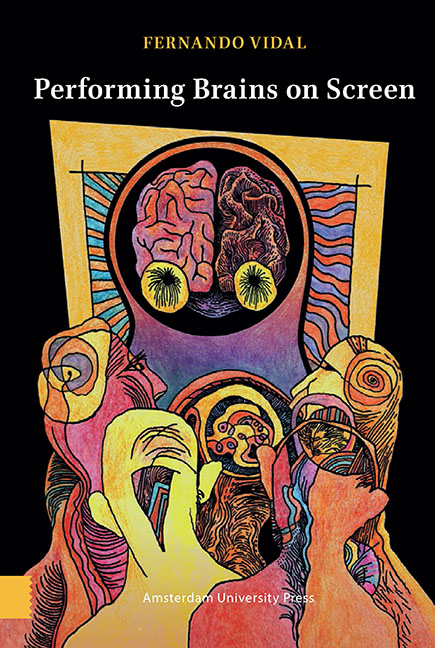Book contents
7 - “Imagine, They Are in the Human Mind”
Published online by Cambridge University Press: 13 May 2022
Summary
Abstract
This chapter's title comes from Fantastic Voyage (1966), a Cold War–era movie in which a miniaturized American submarine enters the body of a Soviet-bloc defector in order to save his life by removing a blood clot in his brain. Beginning with that fusion of brain and mind, the chapter ponders this book's two main observations: first, that brainfilms assume the ideology of the cerebral subject as a visual and narrative resource, but nearly always question or problematize it in their plots; second, that the body persists in spite of the relative disincarnation operated by the reduction of self to brain and that the medium of cinema has functioned as one of the most powerful modern reminders of humanity's essentially embodied nature.
Keywords: brainfilm, cerebral subject, embodiment, mind and body
Fantastic Voyage (1966): In the midst of the Cold War, both the US and the Soviet Union have developed a technology to miniaturize matter. As General Carter explains while driving inside the mazelike top-secret underground facilities of the Combined Miniature Deterrent Forces (CMDF), “We can reduce anything to any size we want. … We can shrink an army with all its equipment.” The process has a drawback: it persists for only one hour. The Czechoslovakian Dr. Benes has figured out how to make it last indefinitely. But an assassination attempt while he is escaping to the West leaves him in a coma with an inoperable blood clot in his brain. To save this valuable defector, the submarine Proteus, with a mostly medical five-person crew, will be miniaturized, injected into Benes's carotid artery, and travel via the arterial system to the clot; there the team will remove the thrombus with a laser gun, sail back along the venous system, and be extracted before they regain normal size.
At CMDF, Proteus's position is constantly monitored and marked on a huge outline of the human body. As the submarine approaches the brain clot through the inner ear, top medical officer Colonel Reid expresses his wonder to General Carter: “Imagine,” he says, satisfied but almost pensive, “they are in the human mind” (Brainfilms 7.1).
- Type
- Chapter
- Information
- Performing Brains on Screen , pp. 219 - 226Publisher: Amsterdam University PressPrint publication year: 2022



